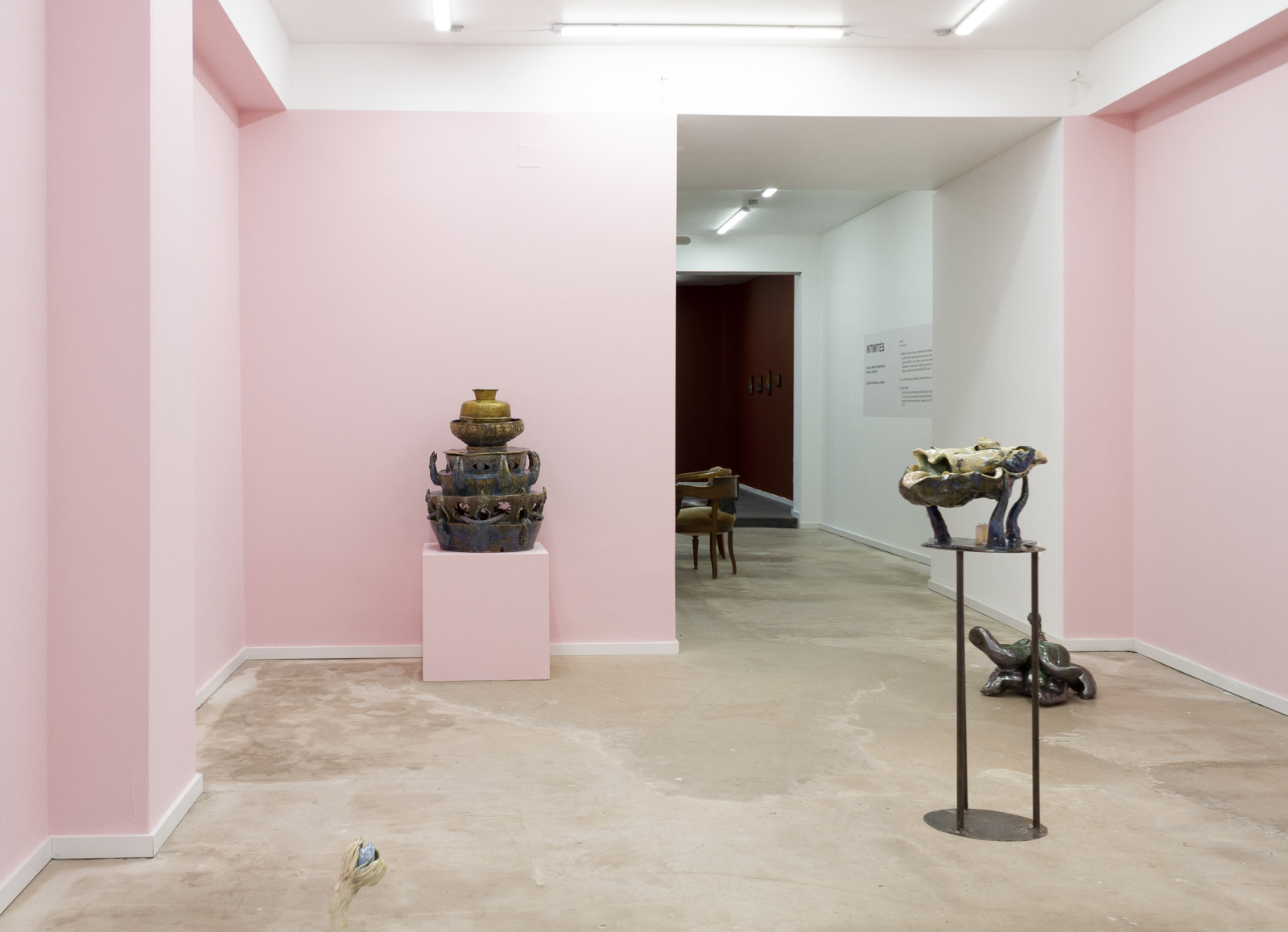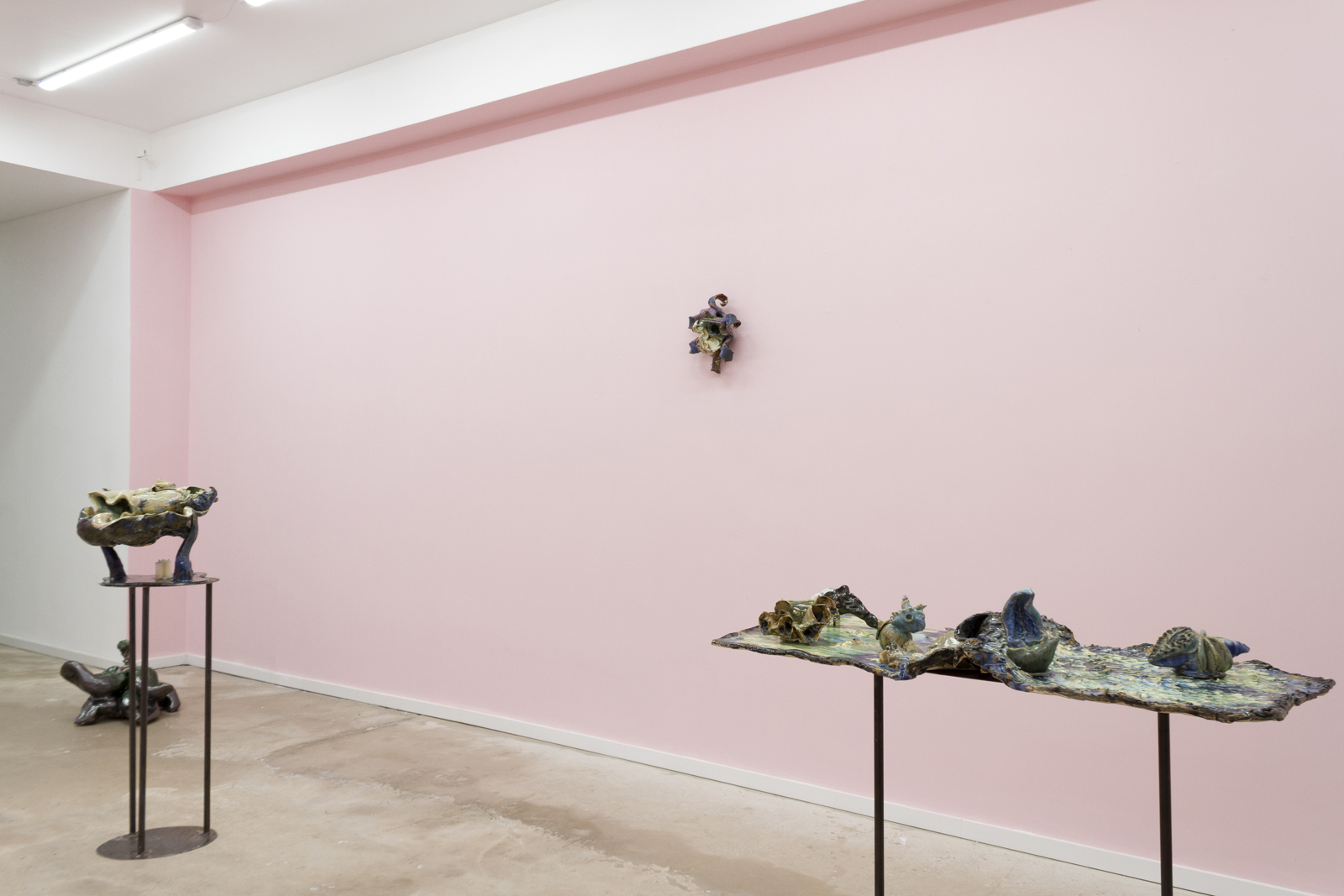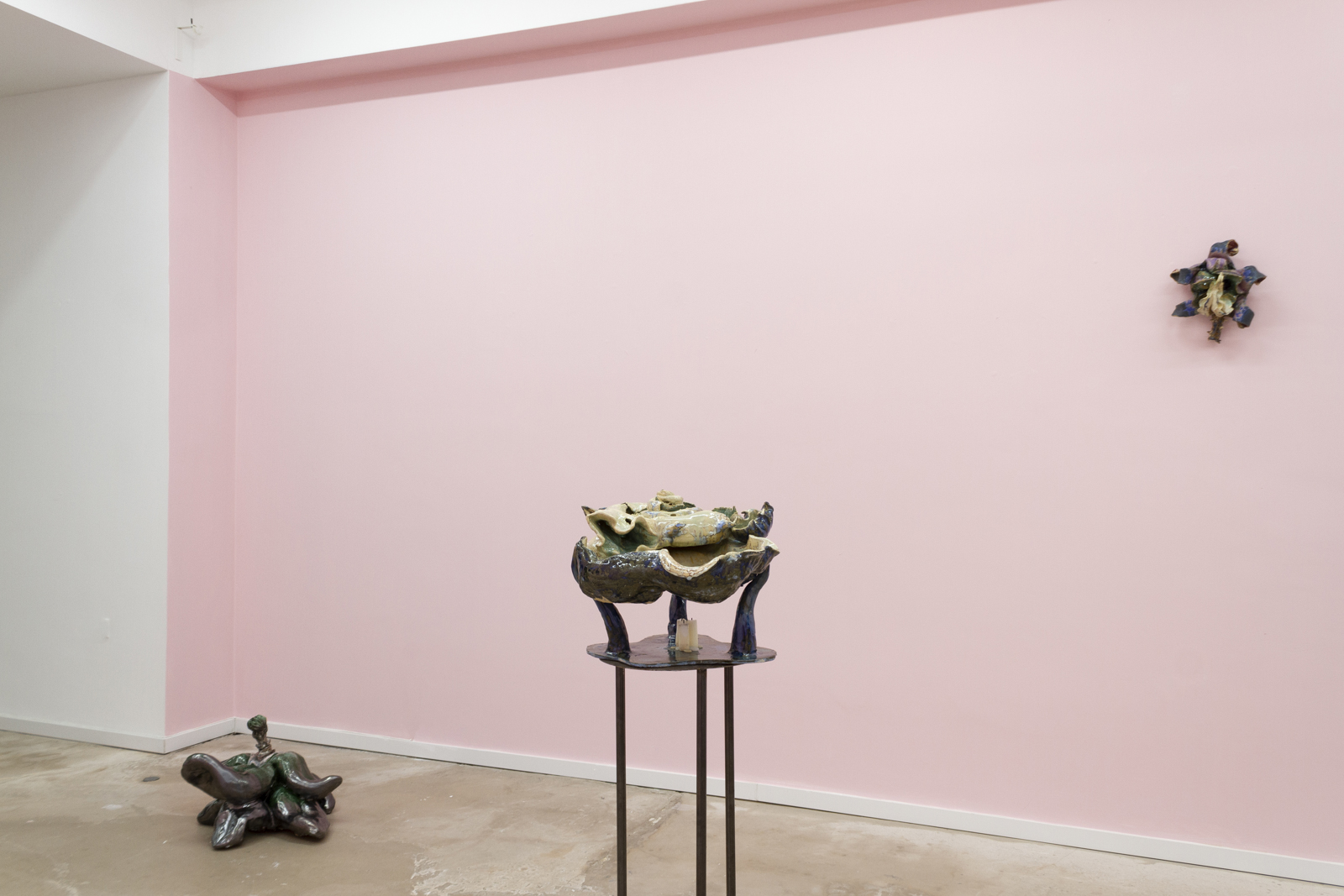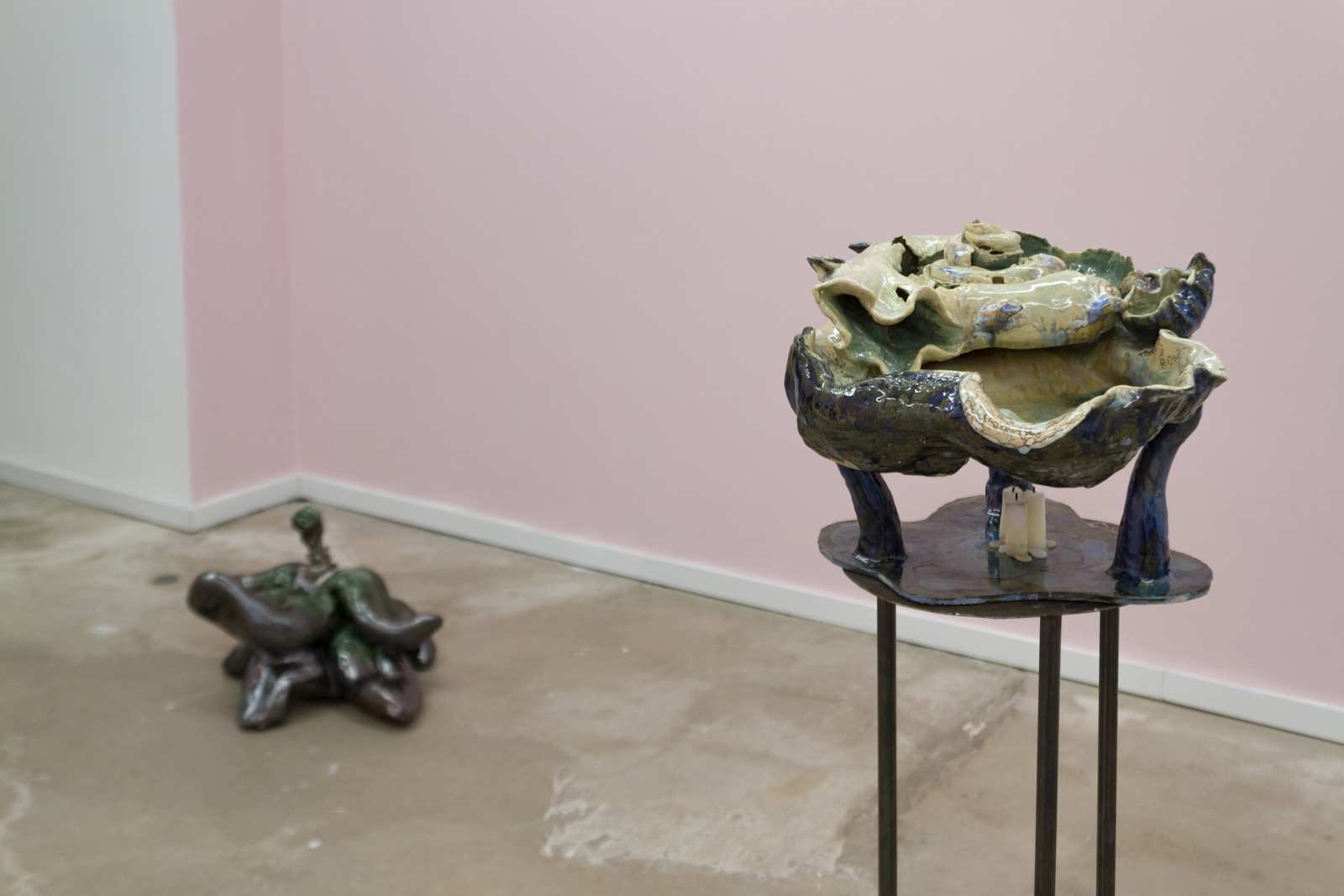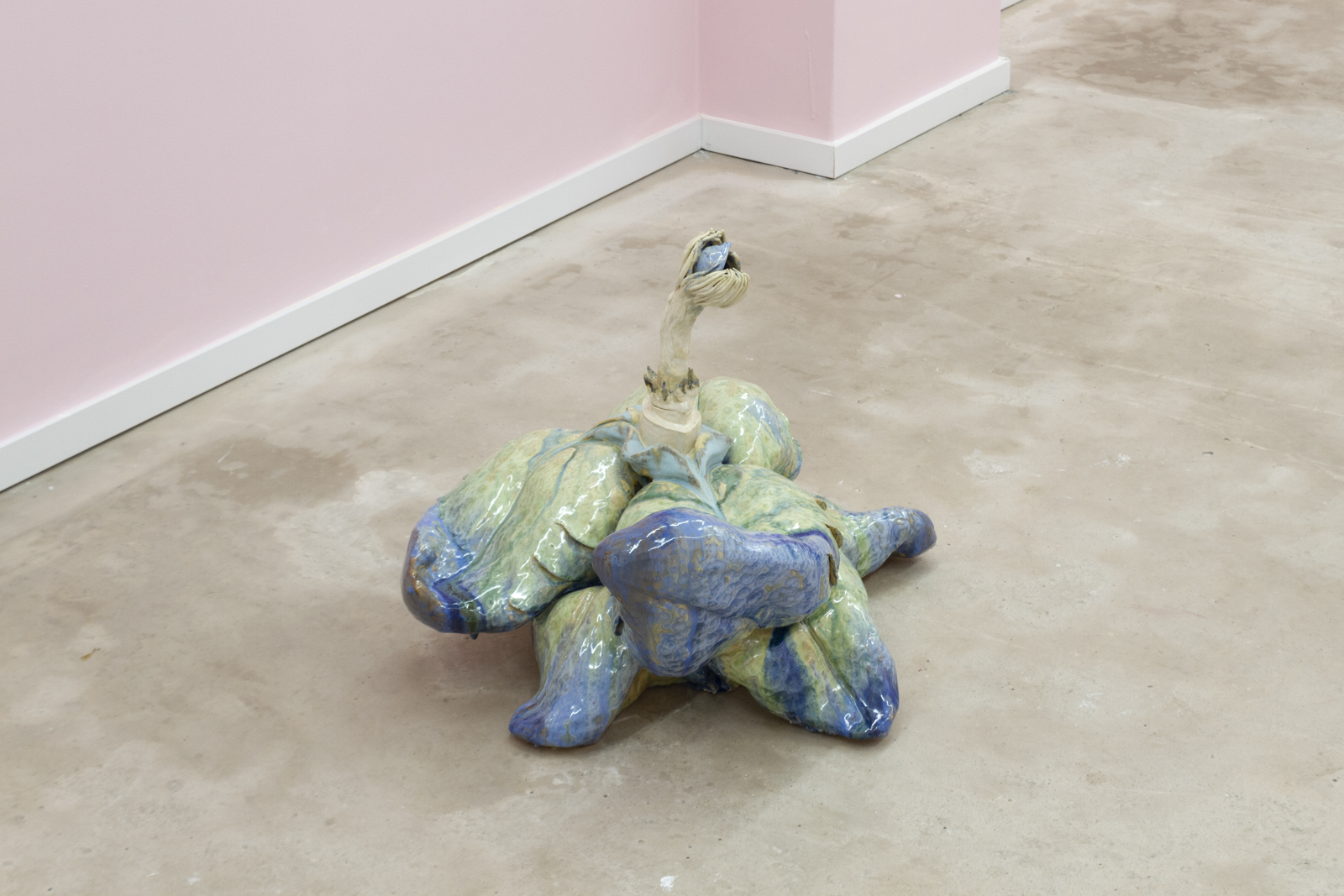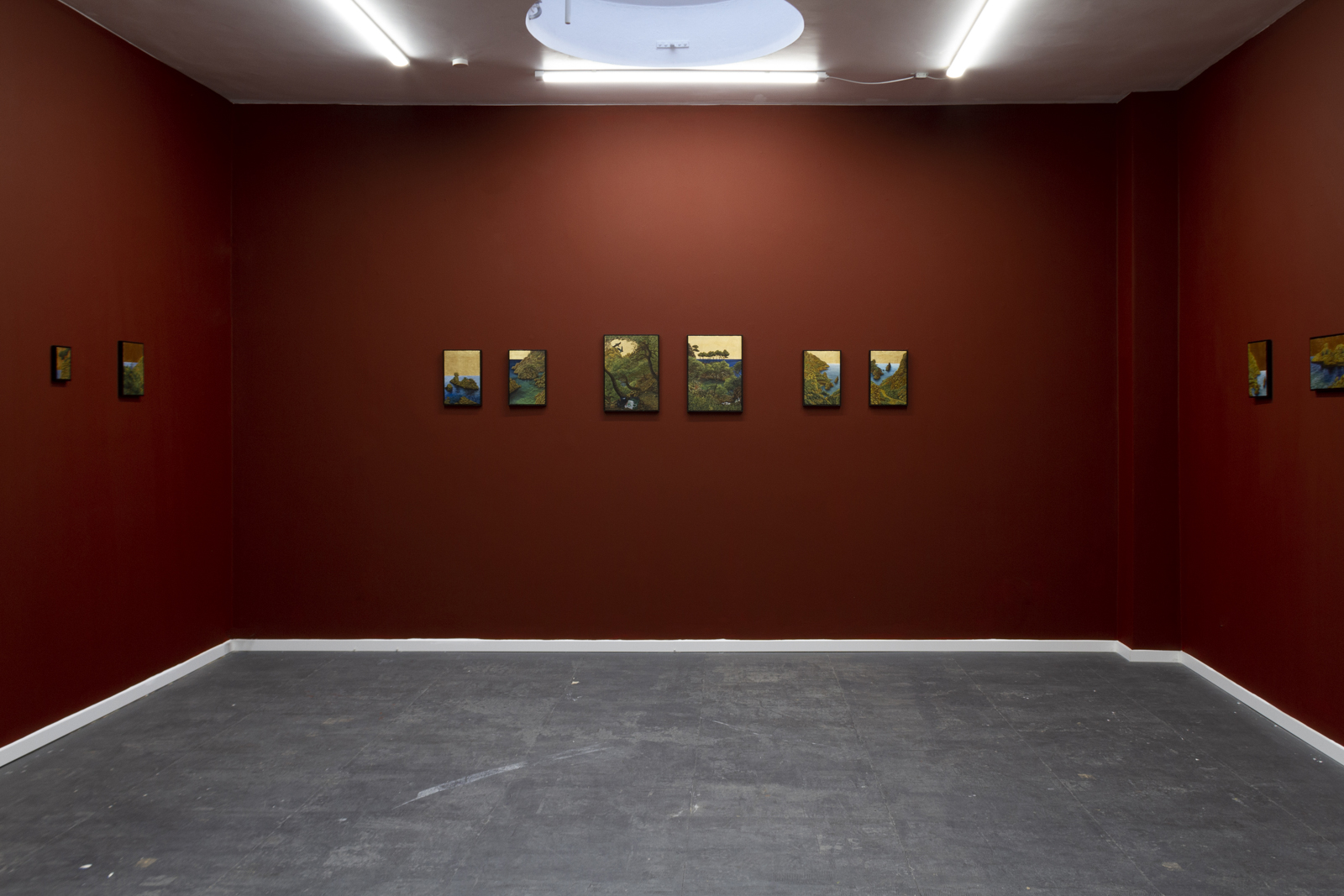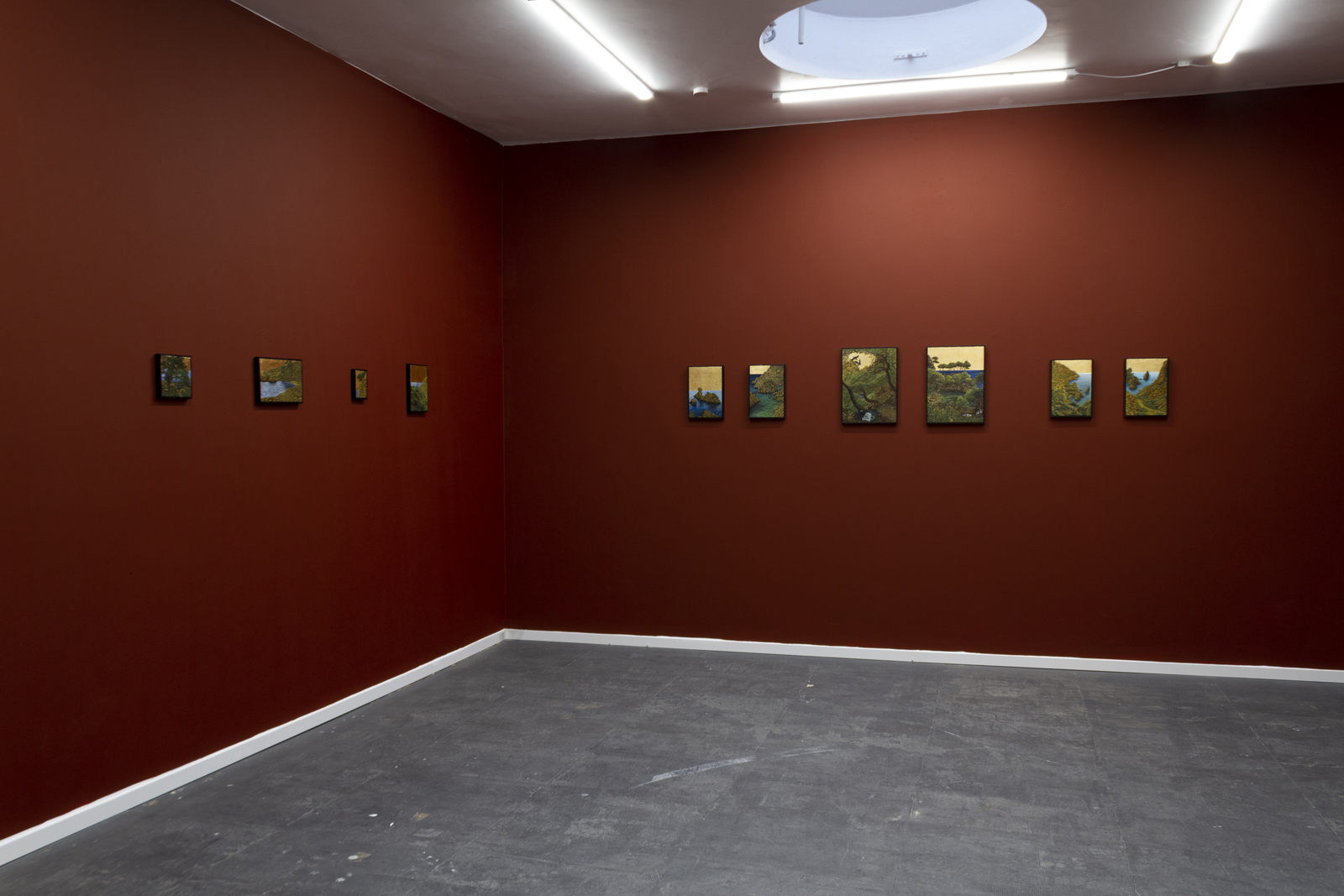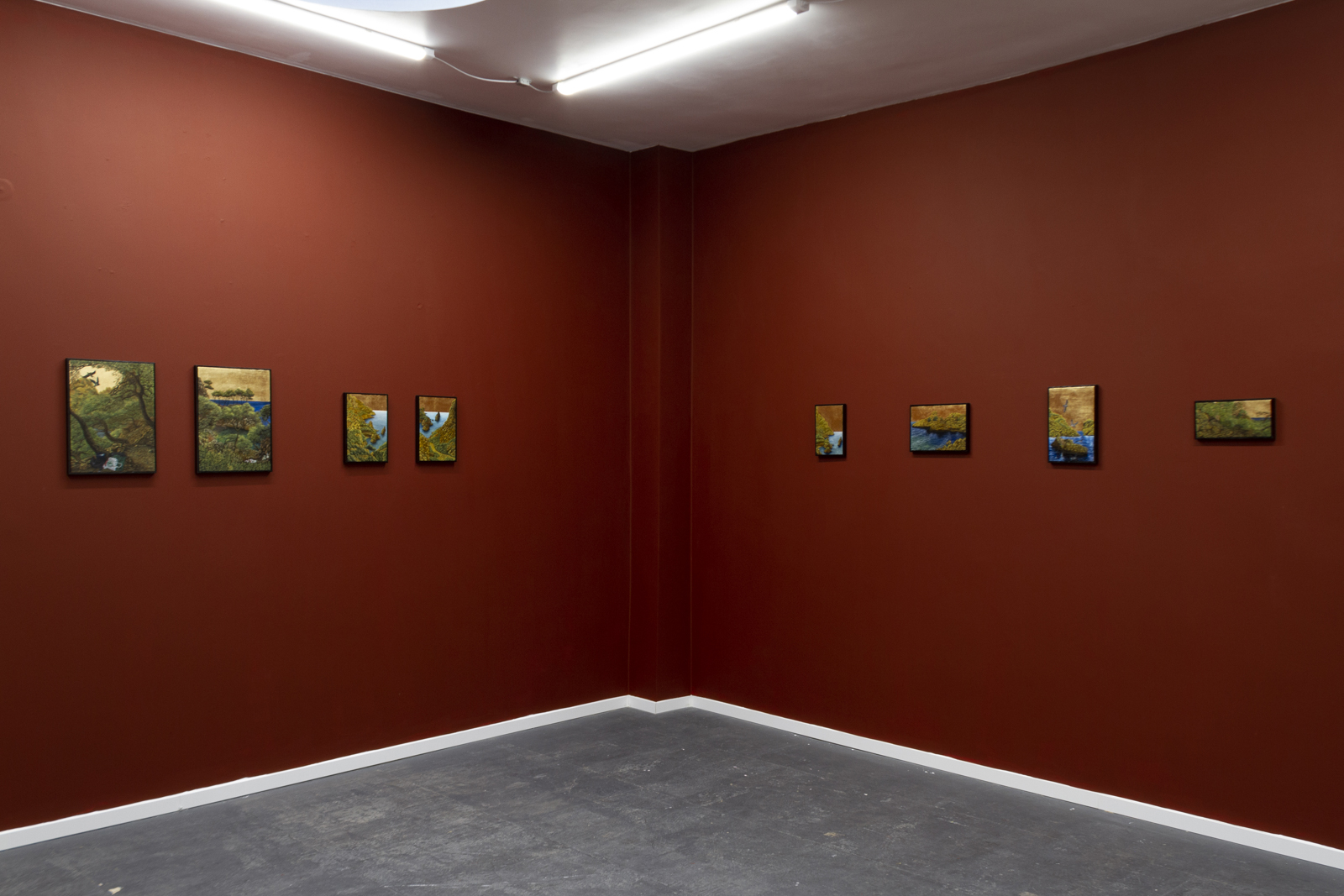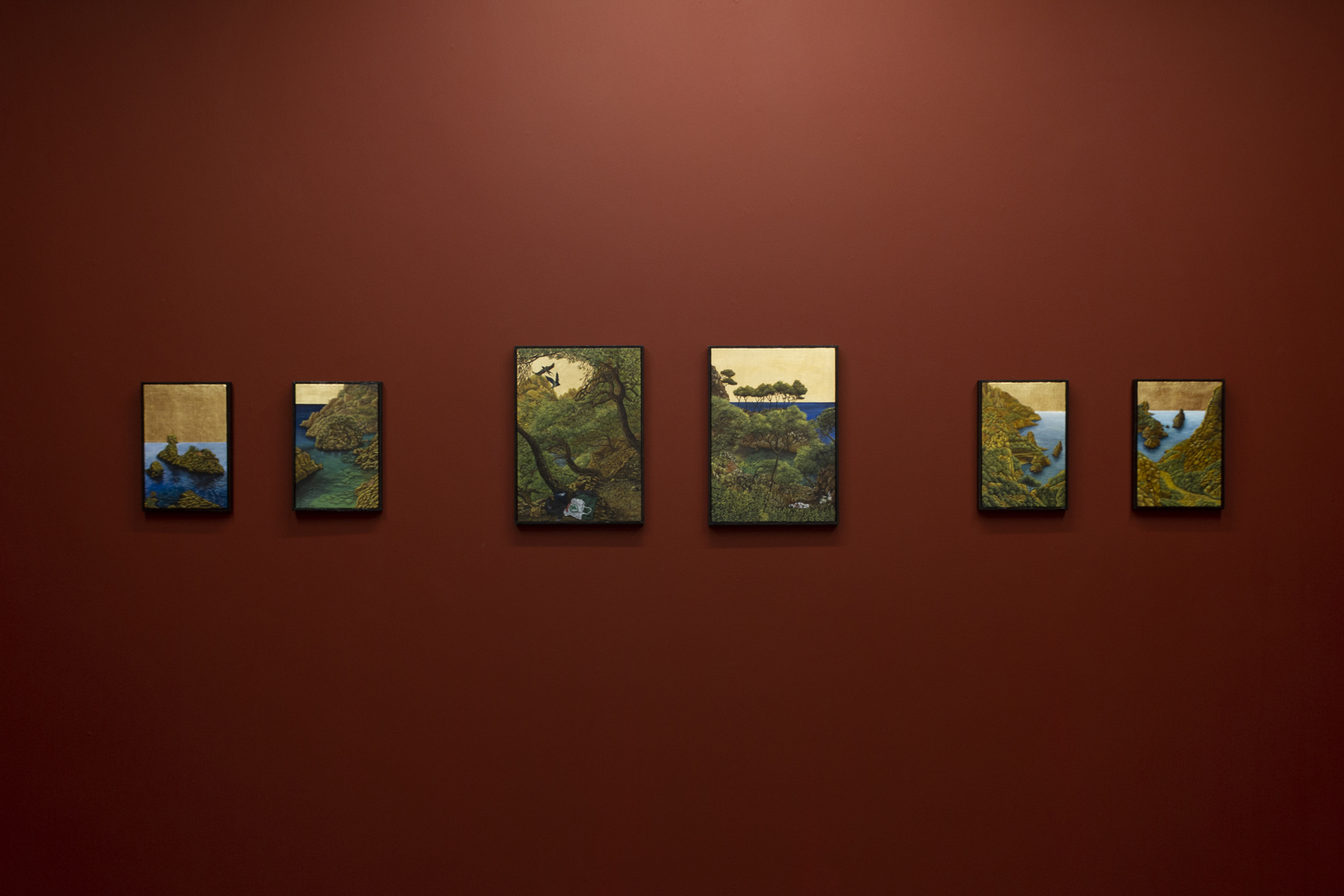- Sacha Cambier de Montravel, Camille Correas
- Feb. 23 - Mar. 23, 2024
- Intimités
Intimités
Curated by Pierre El Khoury
You don't need to know the names of flowers to feel called by a landscape. The sight of a flower of a particular color, the velvety white of a narcissus, the scent of a tree and, for example, the needles of a pine, all have a sensual quality and call forth an intimacy that could well do without words.
However, being able to distinguish between species, to know which one you can put in your mouth without getting intoxicated, gives a feeling of additional familiarity. Many myths, sometimes warnings or invitations, shape our perception of what surrounds us. Ovid's Metamorphoses provides numerous examples, compiling Greco-Latin tales and recounting, for example, the story of Narcissus transformed into a flower or Daphne into a laurel.
Sacha Cambier de Montravel finds in this ancient material a number of arguments for his latest series of paintings on wood. If you pay close attention to the details, you'll find references to Orpheus and Eurydice, Philemon and Baucis and Pygmalion and Galatea, such as the snake between the foliage, a swallow in the sky or a carved tree. These subjects, sifted through the centuries by Christian rereadings, are here transposed into versions where all the characters are male. Referring, for example, to the painting style of Brueghel, whom he cites in the Icarus triptych, he uses the landscape as much to hide as to show. His framing forces us to move around the painting in unconventional ways, almost losing ourselves, in order to reach the subject. The setting of the calanques, both a place of furtive encounters and communion with the sun, evokes an intimate, open space. The almost religious use of gold leaf augurs a new marriage between the human and the non-human.
In her book, Arbres filles et garçons fleurs, Françoise Frontisi Ducroux examines how the plant metamorphoses of Greek myths are gendered, and continues her reflection on how the French language, compared to others, distinguishes between the feminine and masculine. The flower, she notes, is written in French as feminine, while in Italian it is masculine.
These linguistic and cultural observations, and this work on the very definition of nature, feed the work of Camille Corréas, who uses the tools of eco-feminism and science fiction writing to develop her installations and sculptures with organic forms and functions. As they heat up, the digesters release odors that are more or less corporeal, more or less pleasant.
The artist's ceramics are transformative; they can be activated by touch, olfaction or performance, and this way of animating a material often considered inert prompts us to extend our gaze. The sensual, sensory experience offered by the artist with the carnivorous flowers and plants, mutant shells and mollusks of her universe is that of another liquidity, a new mythology. We might think of Venus rising from the waters, but it's the inhabitants of Venus organizing themselves in a post-apocalyptic world, as seen by writer Pamela Sargent, that we should be referring to. All the invertebrates Camille Corréas shapes play on attraction and repulsion, through their colors and haptic properties. If they have titles, they don't all have well-defined names, and with their folds and folds they show themselves but don't give themselves away entirely. They are familiar to us, but retain something of the intimacy they display.
Henri Guette (Translated from French)

